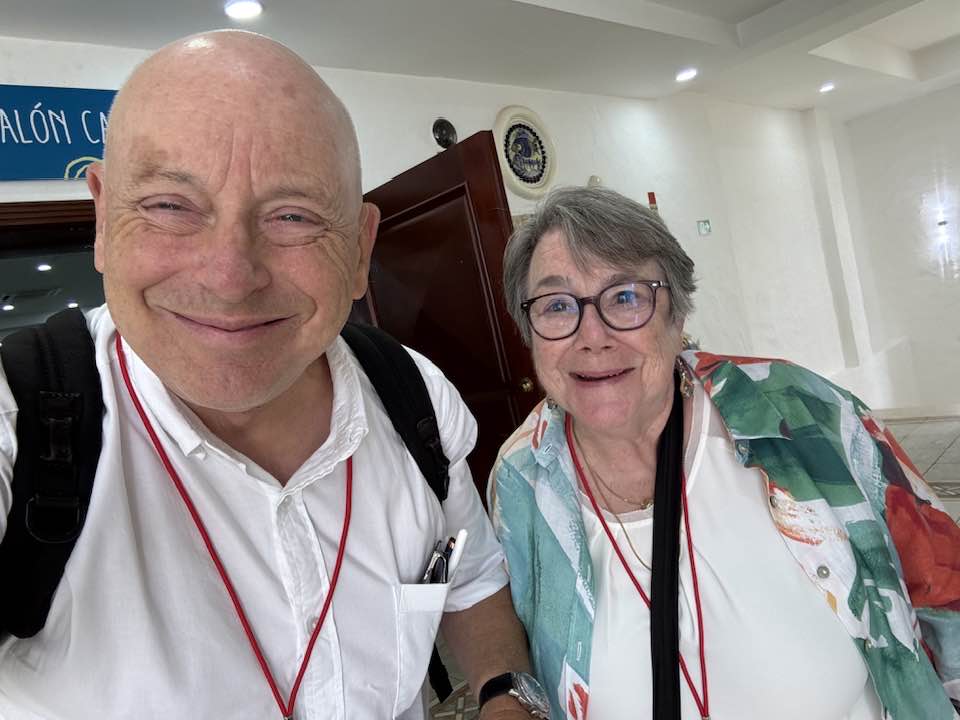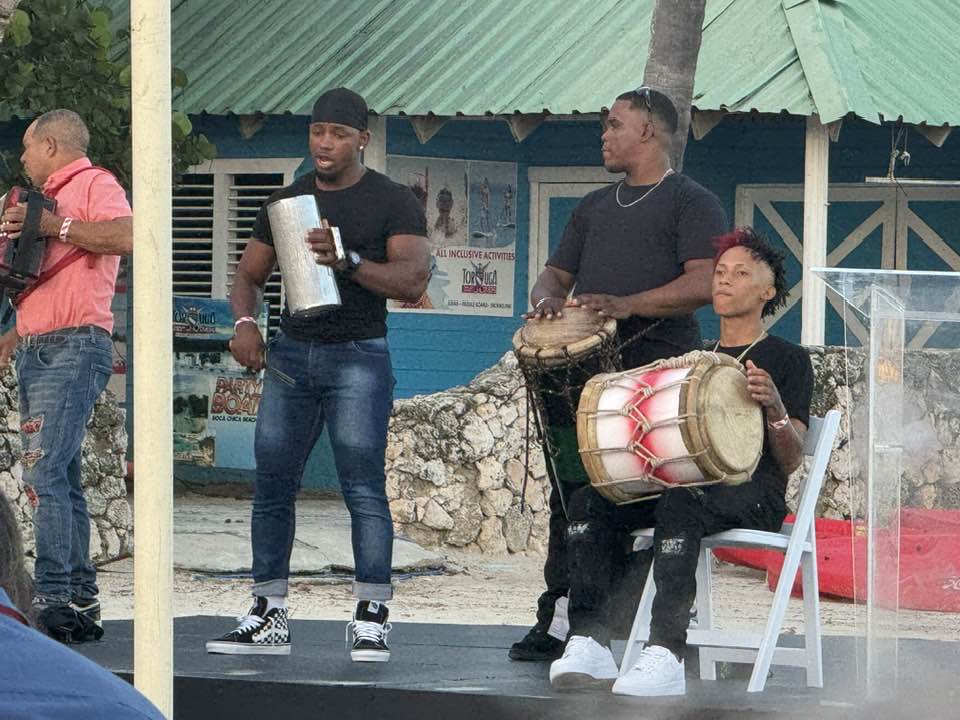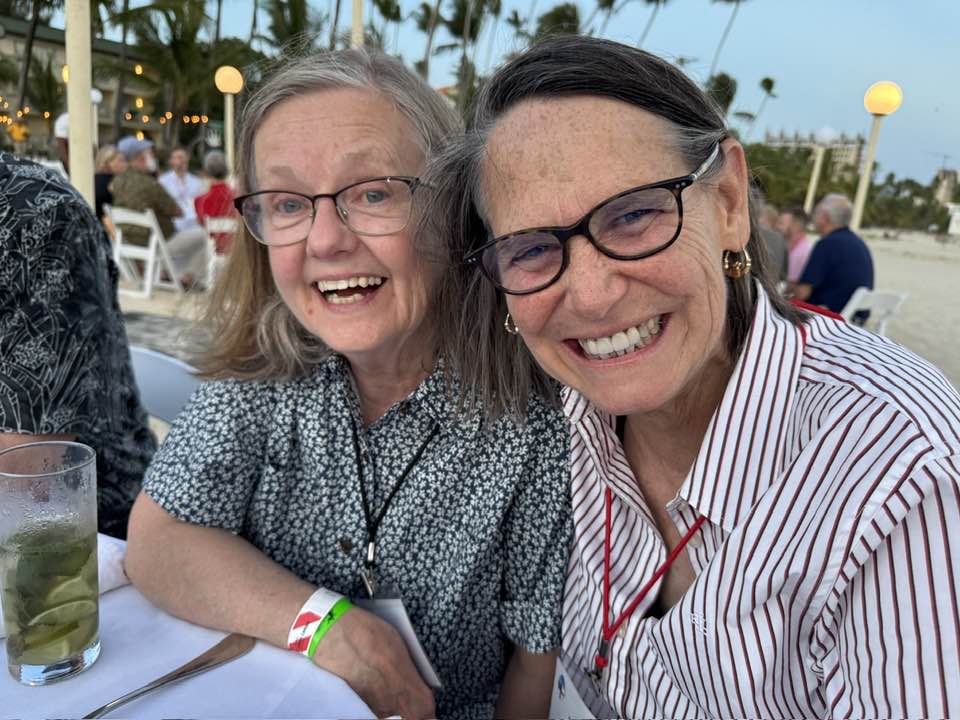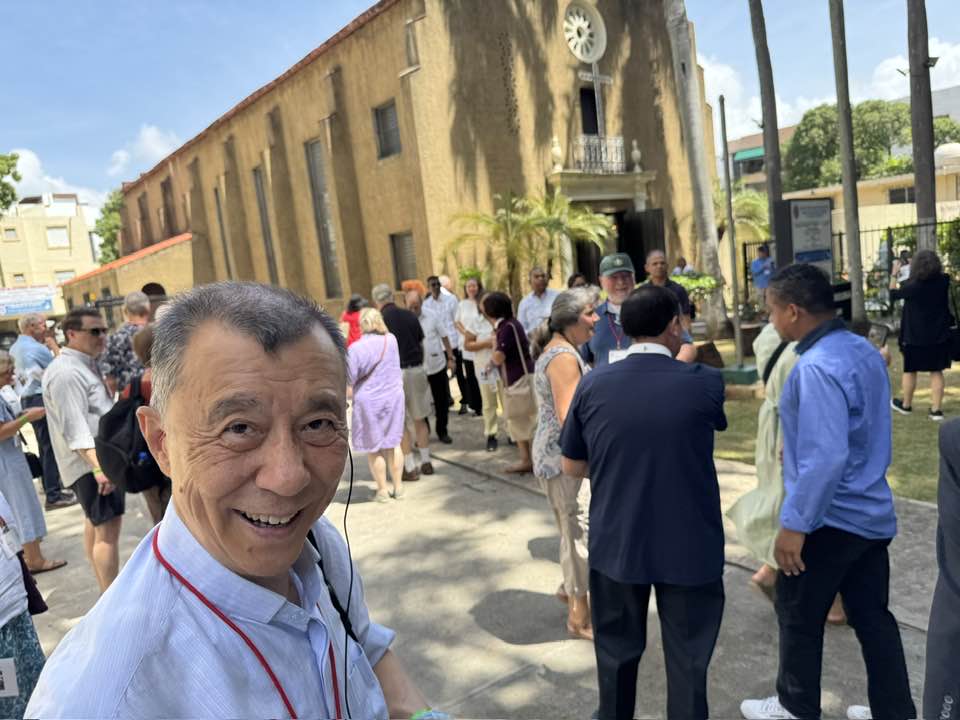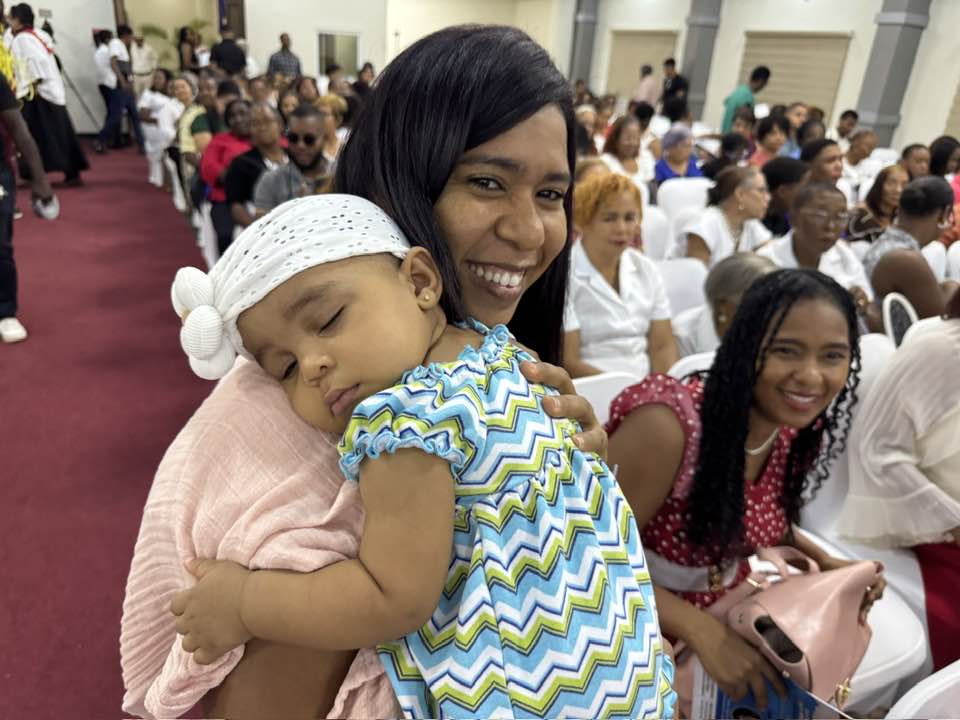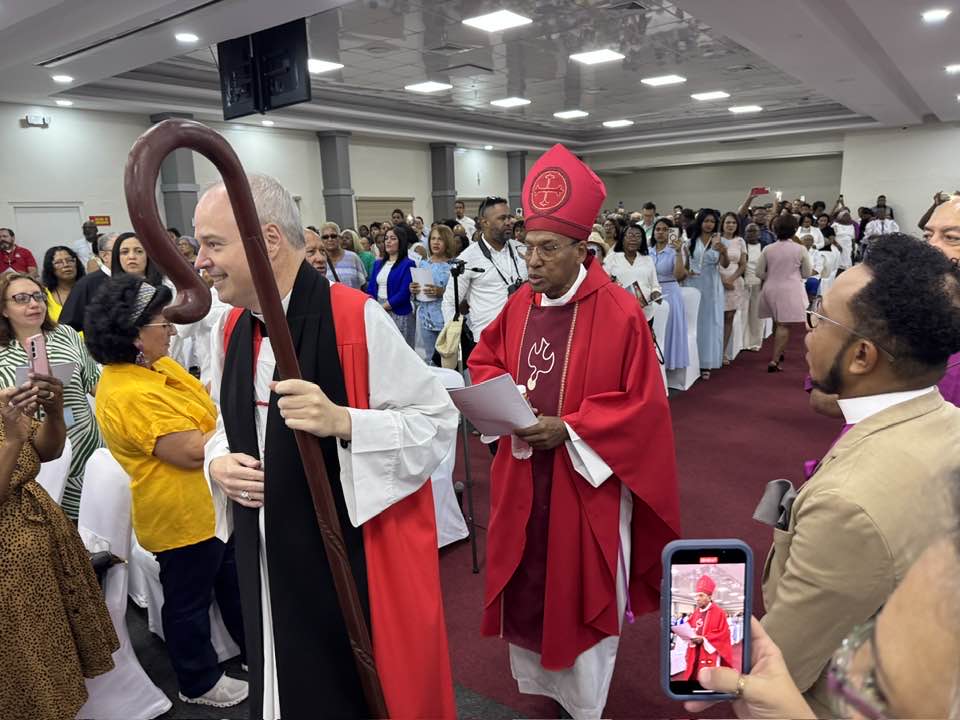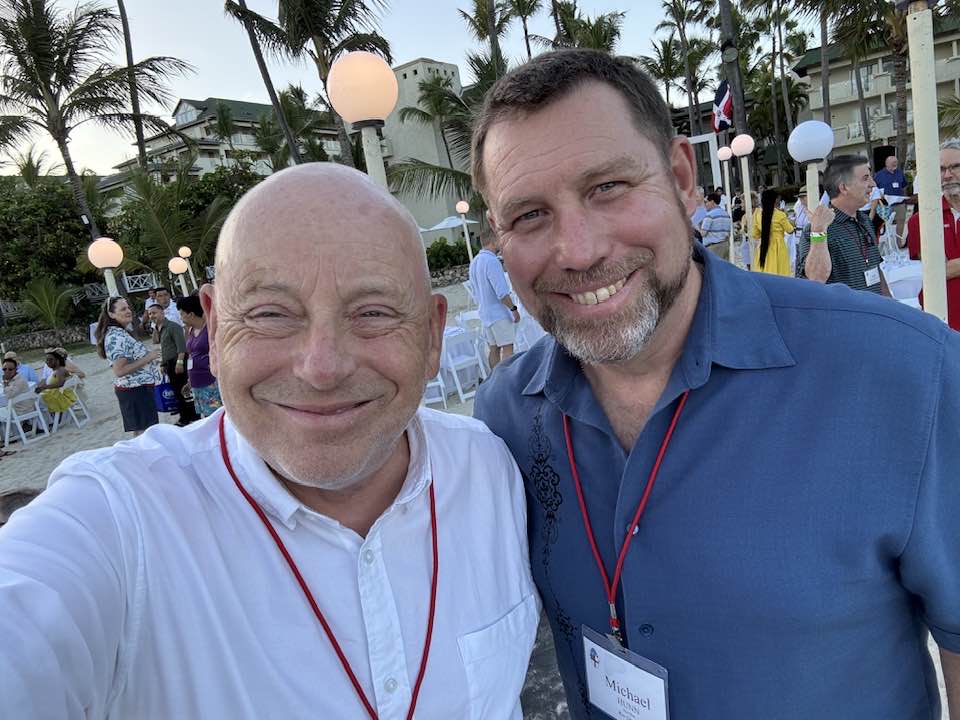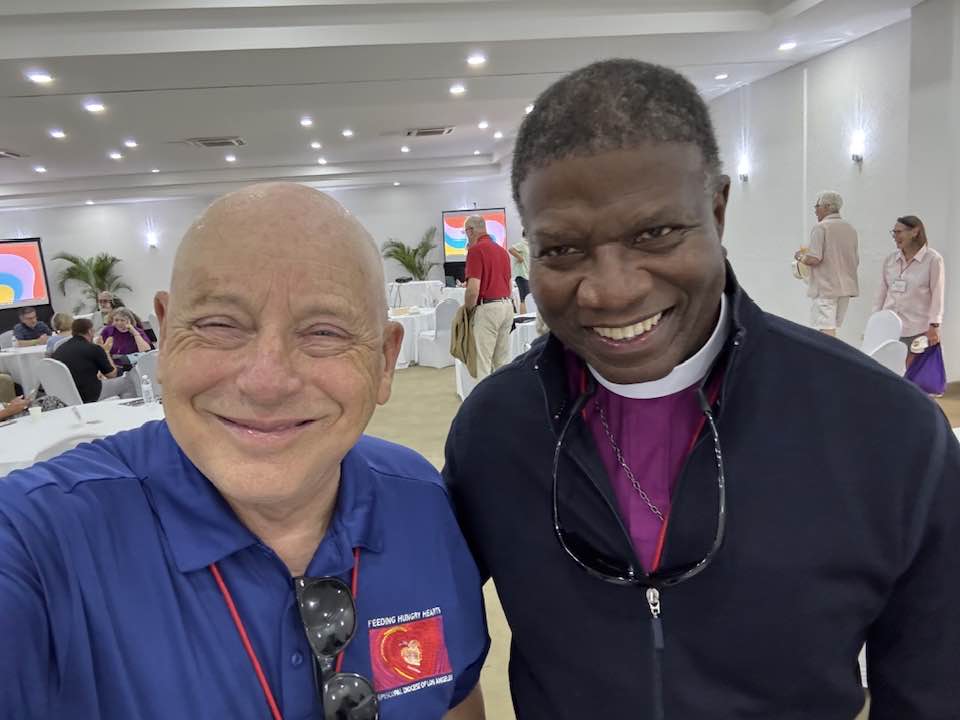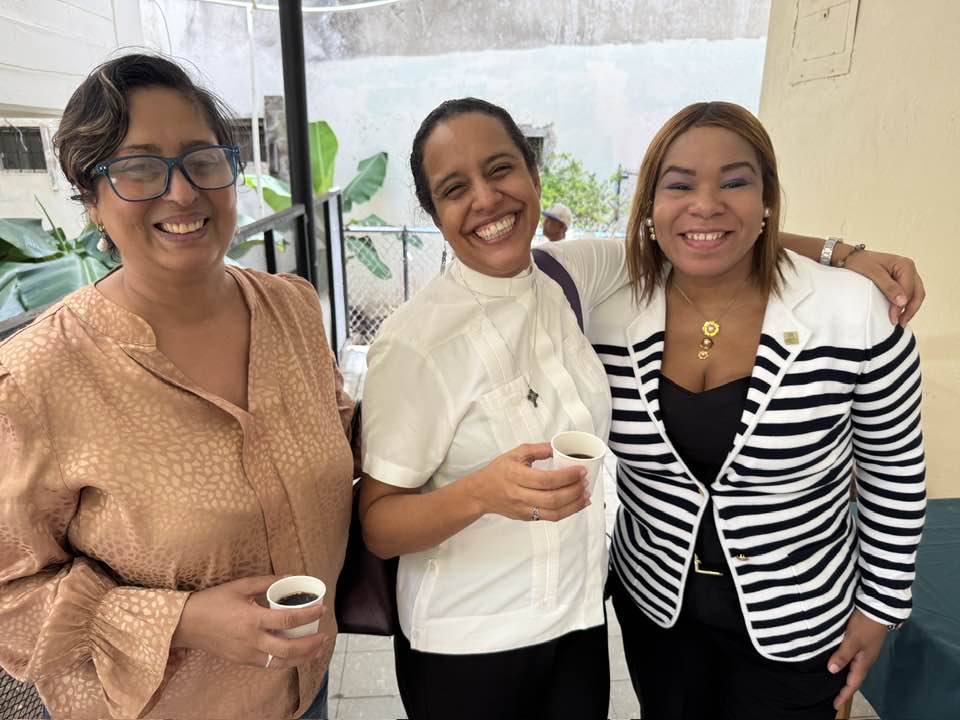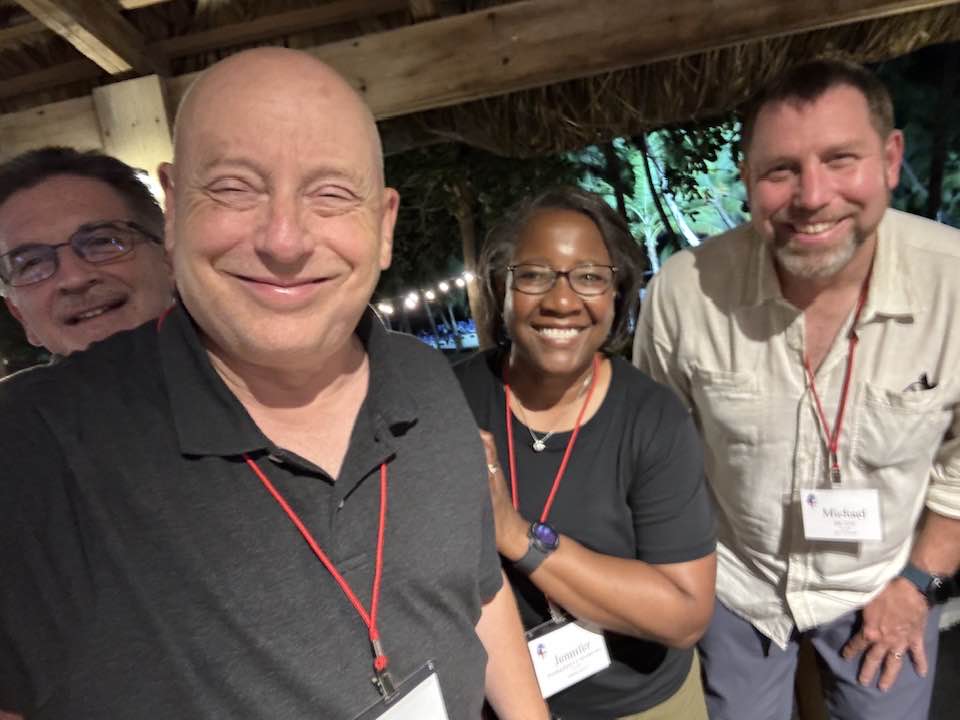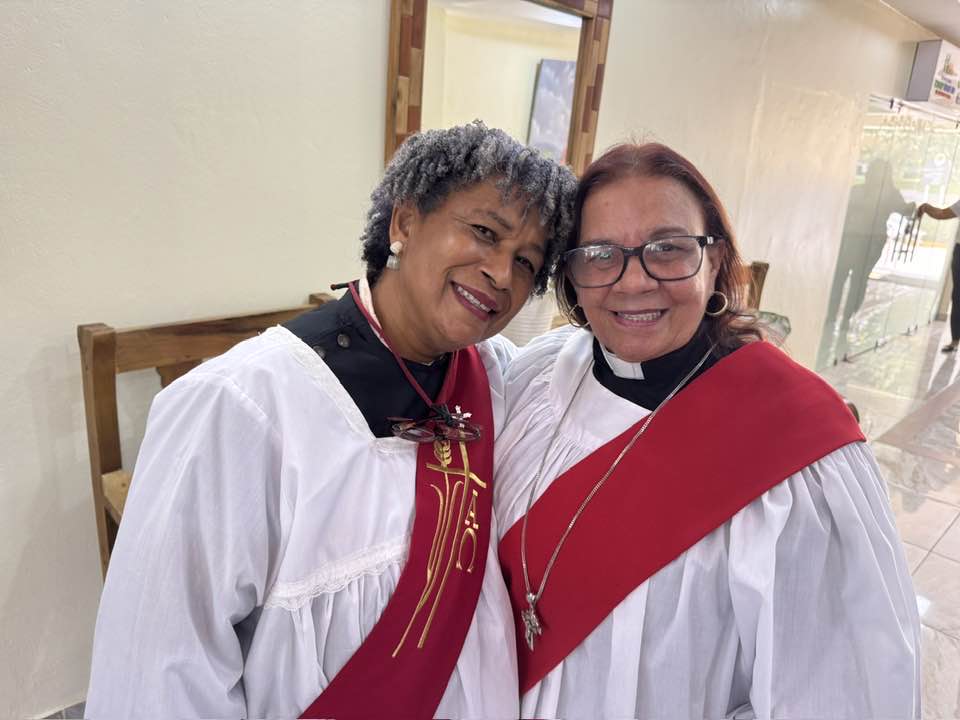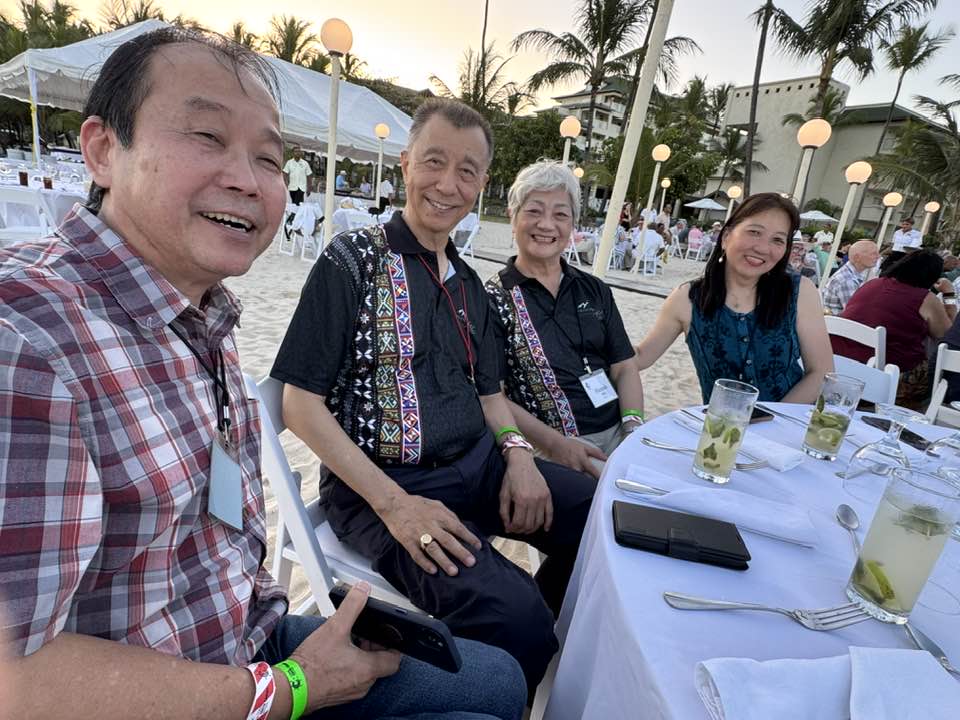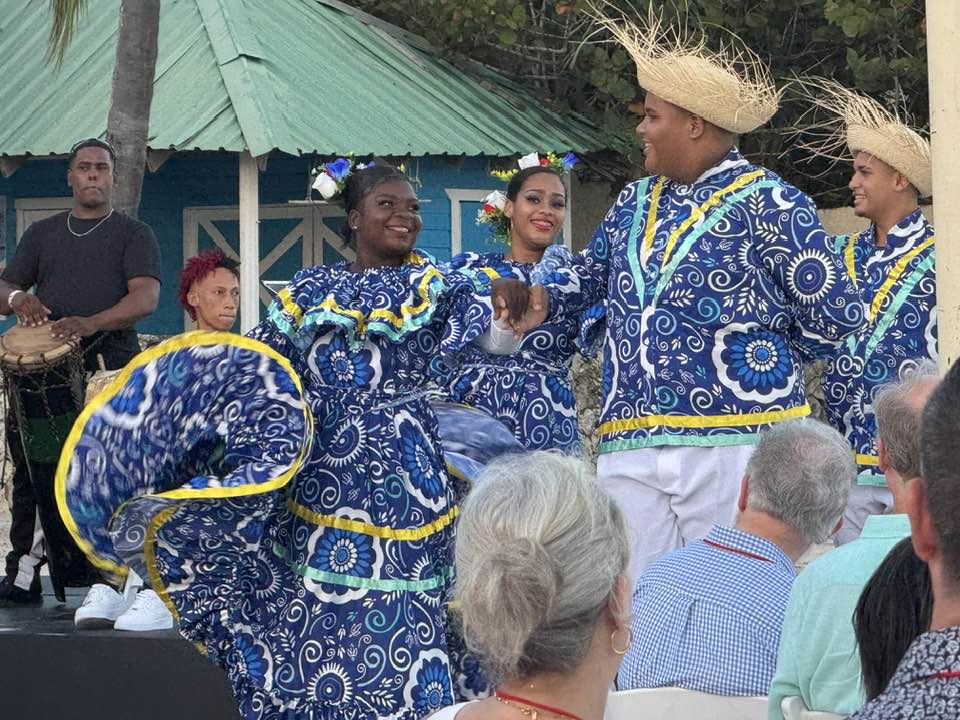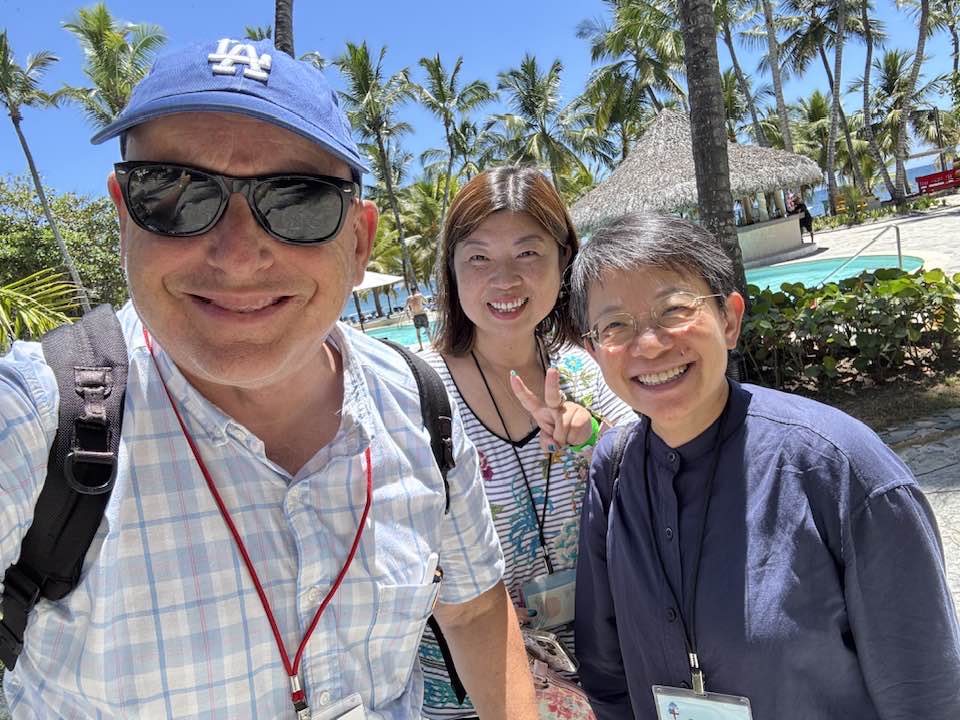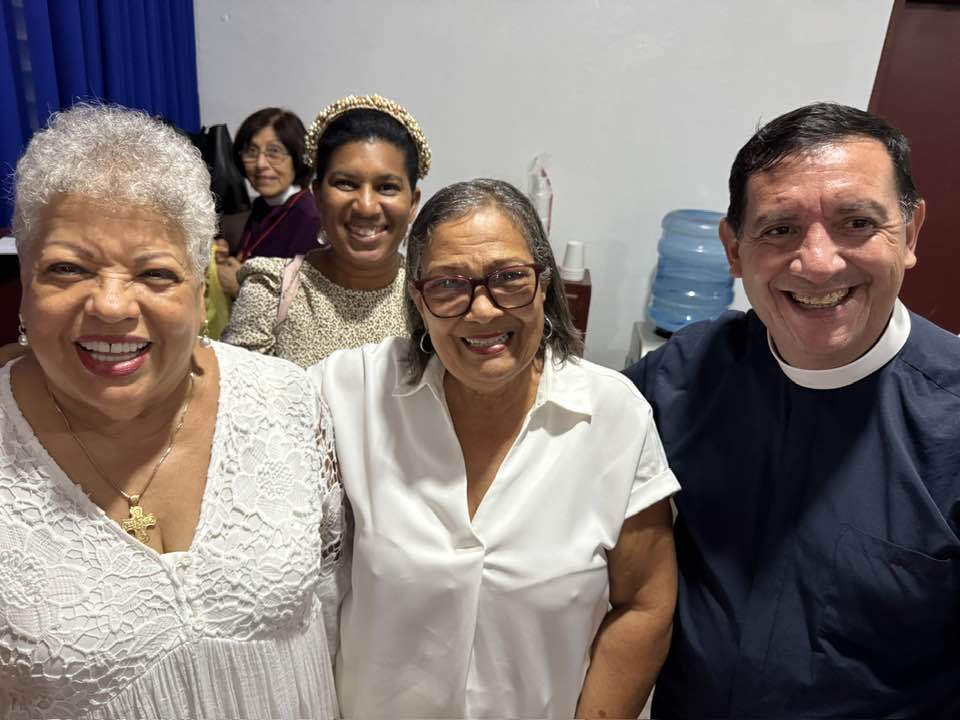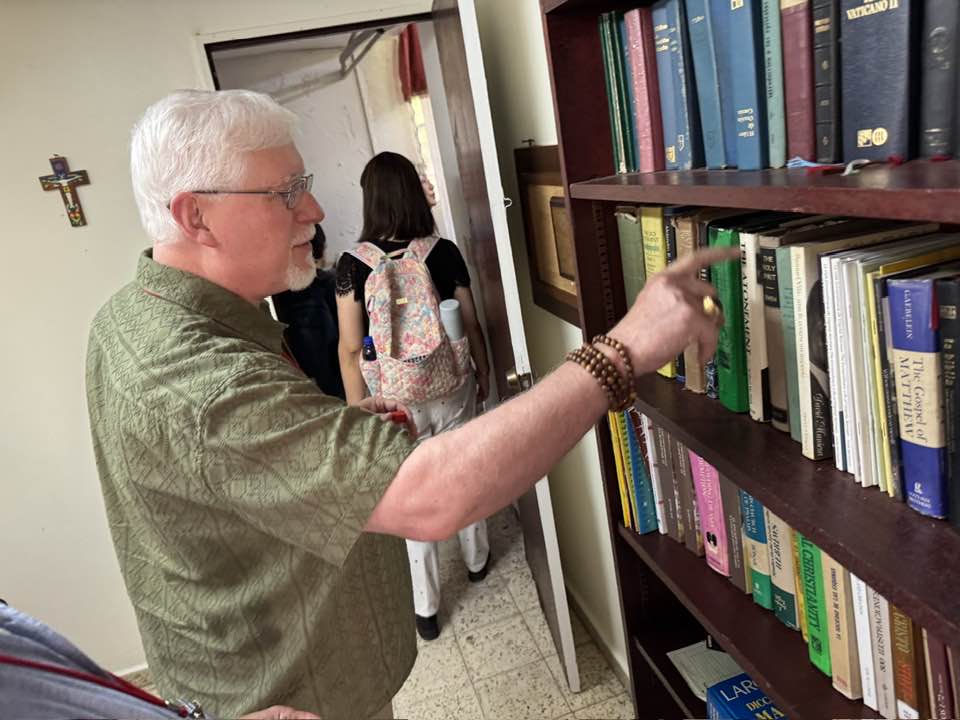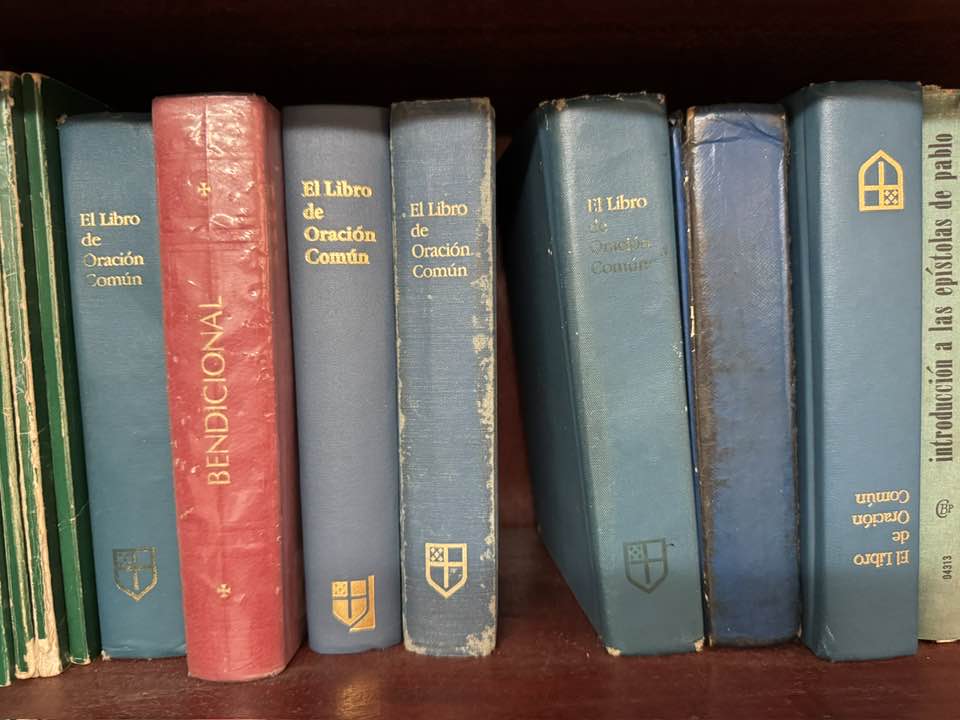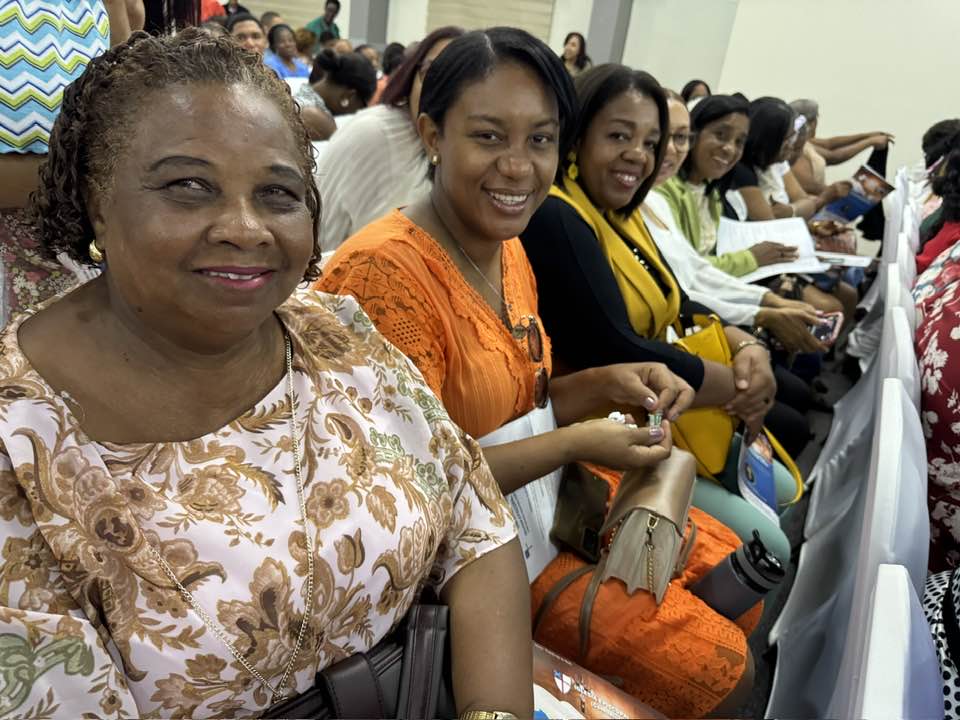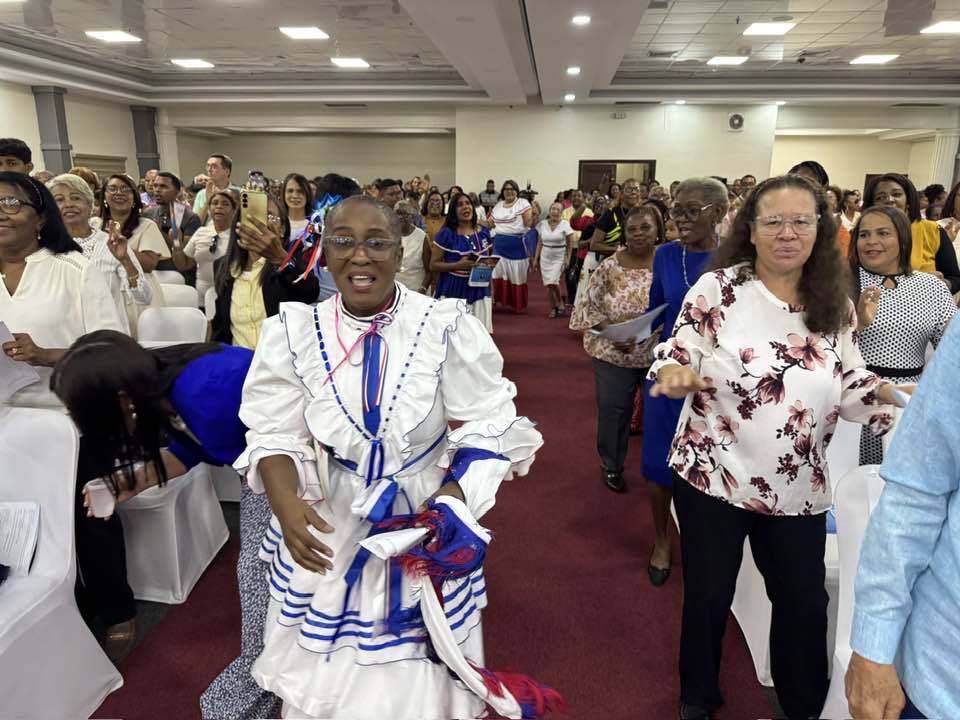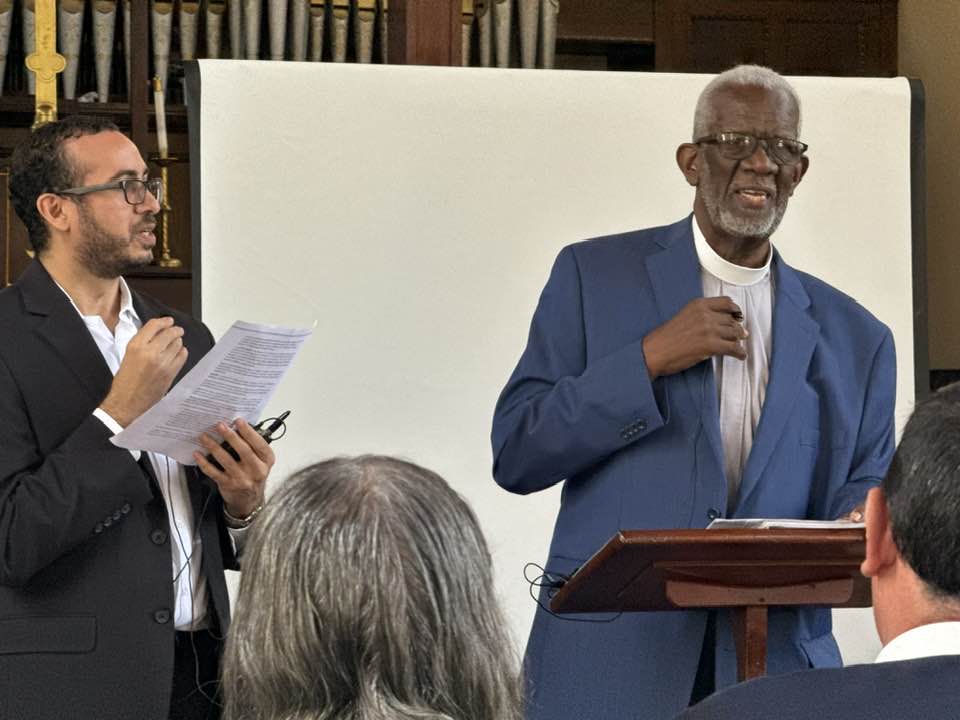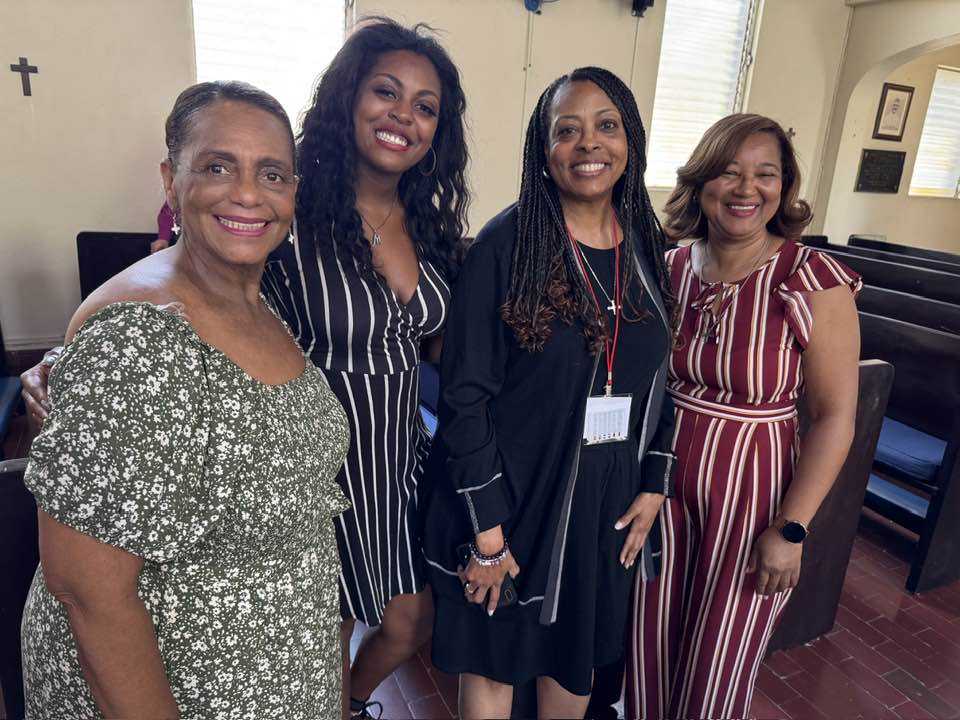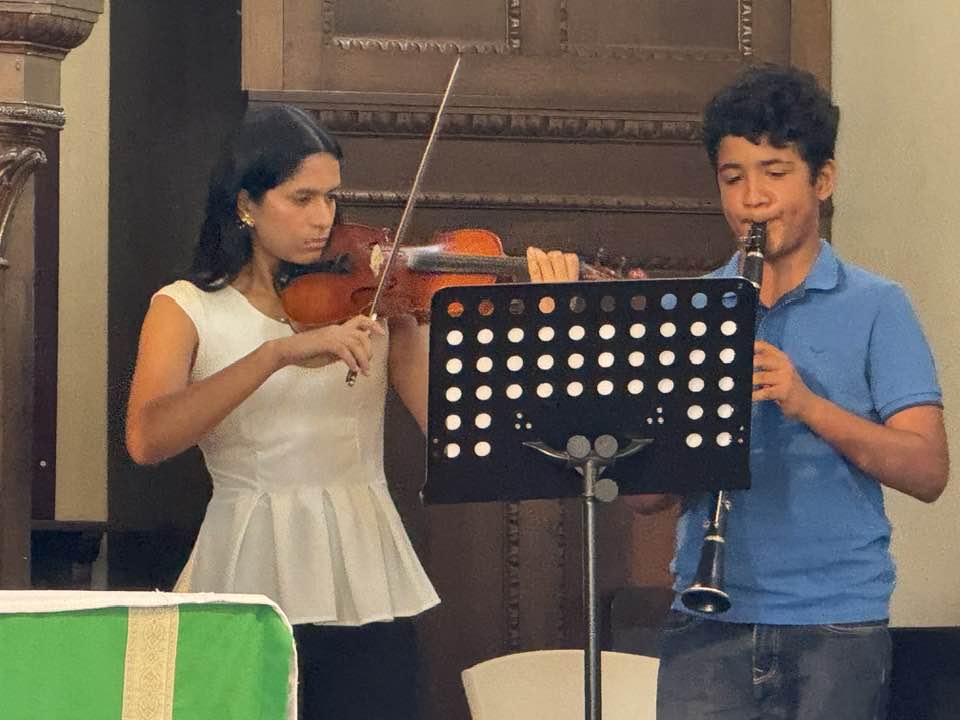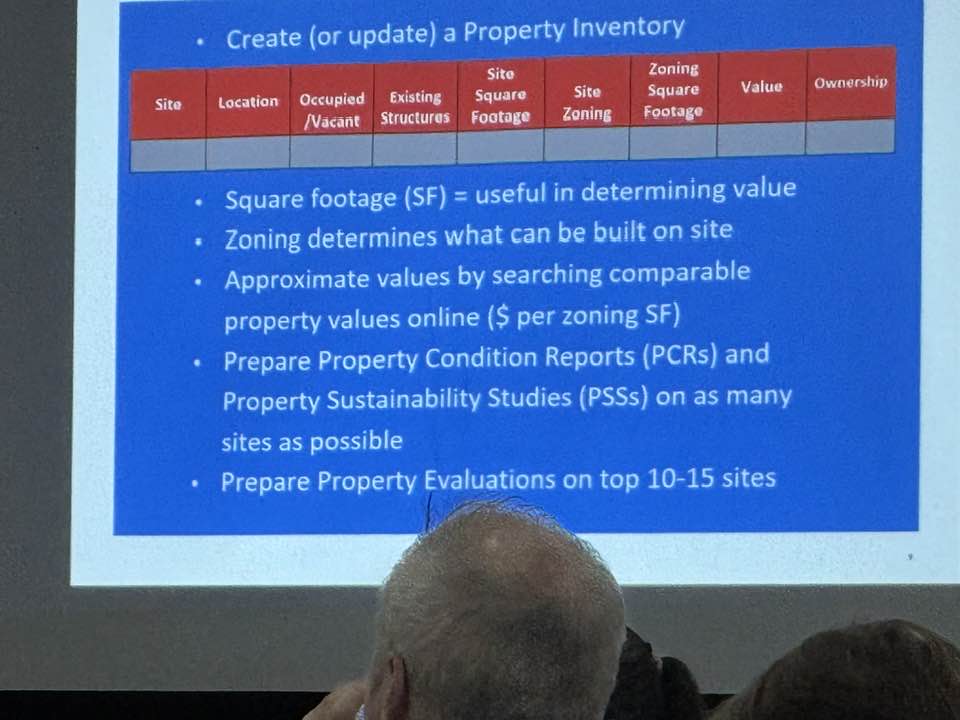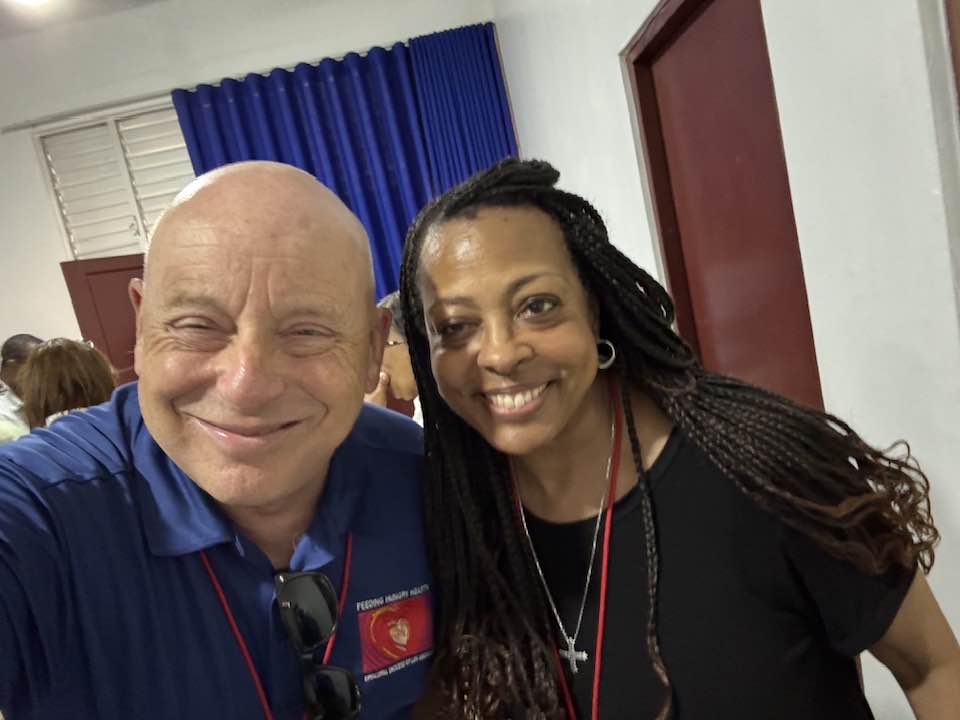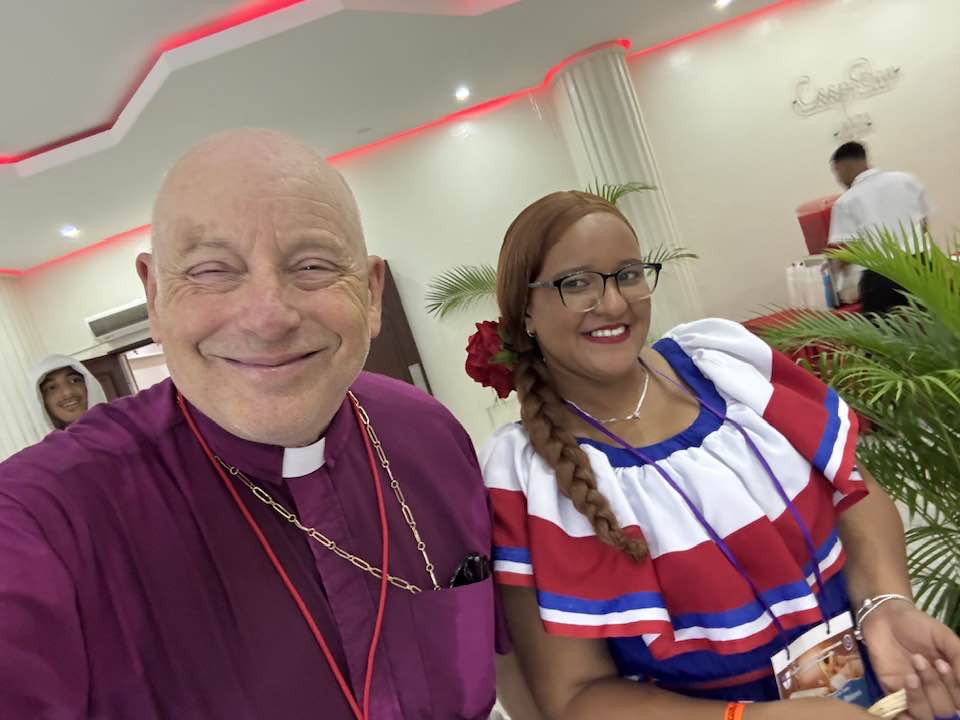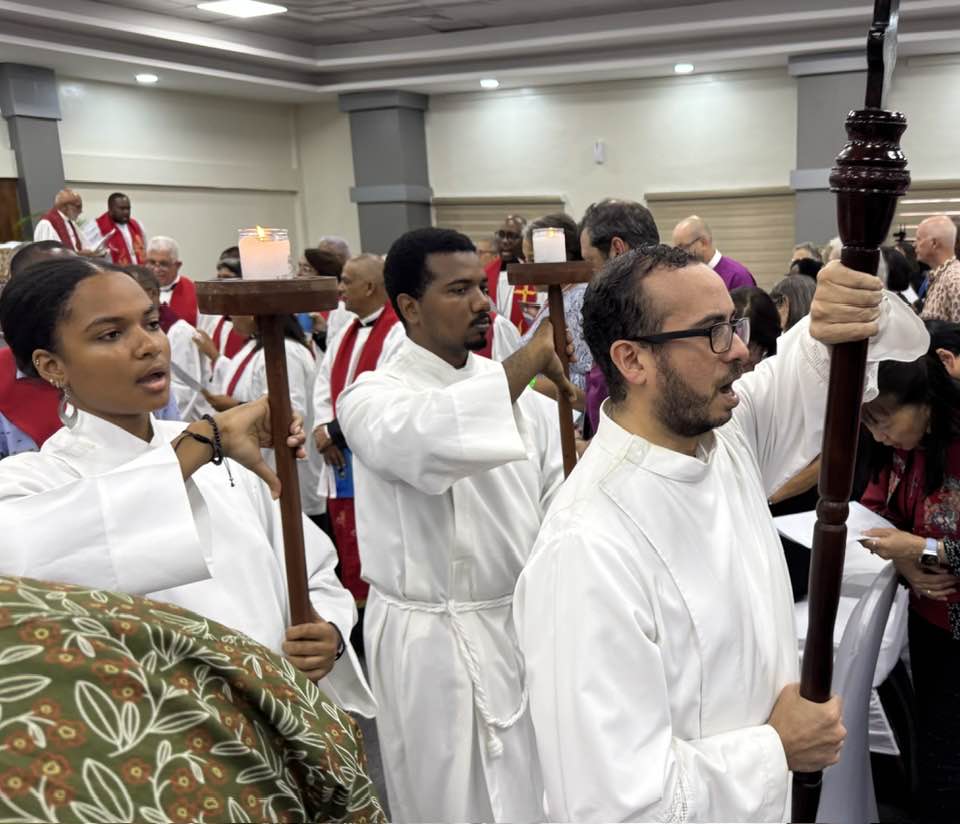
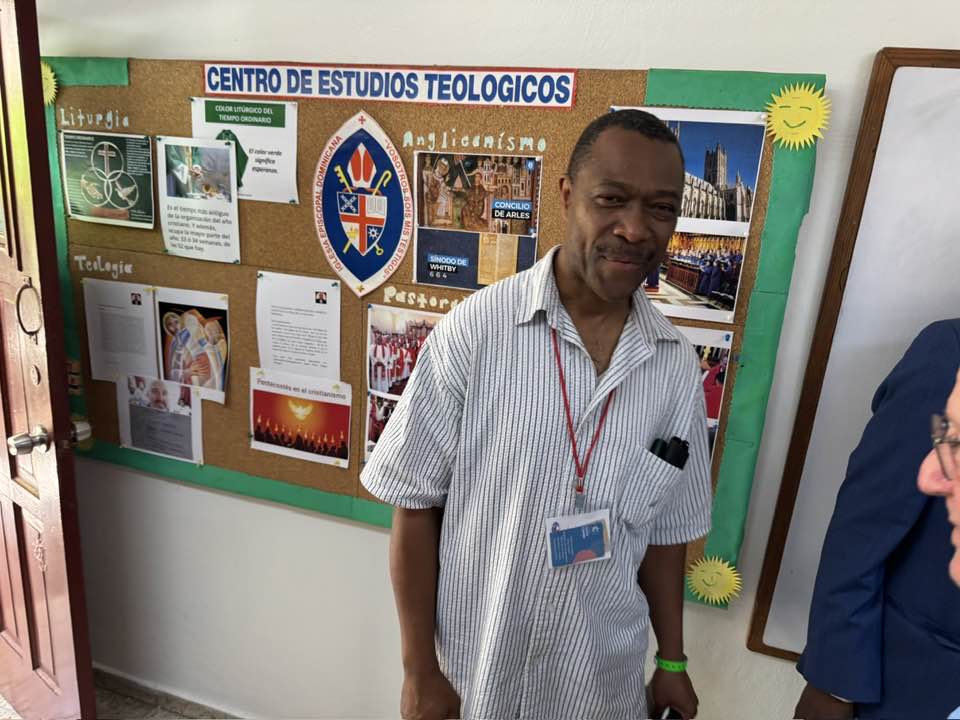
It was especially easy to understand why this morning when Moisés, his deacons, lay leaders, and priests, and perhaps 600 of their folks, representing many if not most of the diocese’s 65 parishes, welcomed us to a festive, Spirit-drenched, three-hour Holy Eucharist service in the third floor ballroom of a hotel in Juan Dolio, not far from where we’re staying. Because the cover of the service bulletin said, “The first meeting in Dominican Republic of the House of Bishops of The Episcopal Church.”
Seeing that in print gave me goosebumps. One had to join Sean and Michael in saying it was about time.
Anglicanism arrived in the DR a half-century after it won its independence from Haiti in 1844. General Convention launched a missionary diocese in 1940. There is also the matter of post-colonial accountability. The United States has occupied this country twice. Before and during the Cold War, we strenuously supported its ruthless anti-communist dictator, Rafael Trujillo. In 1938, his murderous crackdown down on Haitian refugees was documented by the Rev. Charles Raymond Barnes, a priest from the U.S. serving as vicar of a parish in the capital city of Santo Domingo. Trujillos’ regime had him shot.
Things are much better today. Hundreds of thousands of Americans live here; millions of Dominicans live in the U.S. Yet while the DR is of 22 countries making up The Episcopal Church, the bishops had never been. It is always hard to be away from one’s work in ministry, especially during a week as momentous as this. And yet it feels good to make some overdue history and at last to be grateful guests of gracious hosts.
In his sermon this morning, besides telling us about the martyrdom of Fr. Charles, Sean said the risen Christ gives us “a whole new way of seeing creation,” preparing us to be a united people in a dangerous world. He gave thanks for our host diocese’s “living examples of the gospel in action,” especially its parishes, schools, clinics, camps, and seminary. Just as it is back at home. Just it is wherever people glorify God and care for God’s people. It’s the same everywhere, whenever people come together in faith and love.
The miracles happen all the time. Sometimes they’re just more obvious in church. On Thursday, I was among about 35 bishops and their spouses who visited the beautiful Episcopal Cathedral of the Epiphany-Union Church of Santo Domingo, Moisés’ See. Before the dean and his colleagues offered a briefing on the cathedral’s many ministries and institutions, the music director organized a concert in which a young woman and man, on violin and clarinet, played several works, including “Jesu, Joy of Man’s Desiring” by J.S. Bach. They were the daughter and son of a lay leader and a priest — longtime friends, as the women told me later.
As their children played, accompanied by the music director on organ, I thought about how my godfather, Louis, would wrench his precious violin out of tune to match my B-flat clarinet so we could play duets. “Jesu, Joy of Man’s Desiring” was one of our numbers. At nine or ten, loath to practice, I wasn’t very good, and Louis’s violin was being sorely abused, so it must’ve sounded awful.
But I’ll never forget it. Louis did it because he loved my mom and me. We were weren’t even related. Nor are we and our Dominican siblings, at least domestically. But we have our prayer book, music, and faith in the risen Christ. We have our shared history, some good, some tragic. And we have leaders who were determined to make sure we would be together this week, across all that inconvenience and distance. And so I got to hear these faithful young people making their music and meet their gracious moms. I asked them what young folks worry about here. It turns out it’s the same as everywhere else. Paying for their education, the quality of the jobs they can get, and the safety and joy of their families.
We’re making all these new friends while continuing to do the work of communication and collaboration that bishops always accomplish when we’re together. It’s like Willie Nelson and Johnny Cash said about their songs. Let’s get together and steal one another’s ideas.
I had an amazing conversation with the brilliant Bishop John T.W. Harmon of Arkansas, for instance, about Israel and Palestine. Bishop Paula Walker is on the front lines of the struggle for justice in both Chicago and Washington. Her daughter, Micha Green, managing editor of The Washington Informer, who accompanied her mother and is editing stories from her room, gave me insider details on Trump’s occupation.
Taiwan’s bishop, Yuan-rung Chang, and I are talking about next steps in our diocese’s budding relationship now that we have exchanged mission visits. Wise colleagues like Bishop Craig Loya of Minnesota are reminding us about our unique charisms as a church, the things that, if Episcopalians don’t do them, won’t get done. We even got more news we can use in Los Angeles about leveraging real estate in mission appropriate ways. When someone asked our president the other morning how we could heal our country and world, he said he couldn’t care less. Good thing he’s not the only one working on the project.
